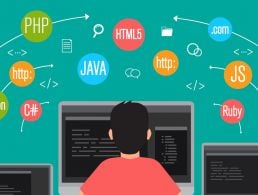US presidential candidate Hillary Clinton has revealed her technology policy and has promised to invest in computer science and STEM education as well as promote entrepreneurship.
In her technology manifesto, Hillary Clinton said the priority is to harness the power of technology so that it works for all Americans, resulting in well-paying jobs throughout the US.
There are five elements to Clinton’s plan:
- Investing in computer science and STEM education to boost the human capital pipeline.
- Rolling out broadband for all Americans and laying the groundwork for the next generation of the mobile internet and the internet of things (IoT).
- Ensuring the US maintains its role as a leading country for technology by ensuring more tech exports and the free flow of data.
- Supporting innovation by creating rules that foster healthy competition, protect intellectual property and safeguard privacy. This suggests Clinton has plans to take on the blight of the patent trolls that are stifling America’s innovation economy.
- Looking at e-government initiatives to make government smarter and more efficient.
Investment in STEM education
Clinton has pointed out that only one-in-five school students in America has ever taken a computer science course, at a time when there were more than 500,000 well-paying tech jobs unfilled last year. By 2020 there will be 1.4m computer science jobs in America but only 400,000 computer science graduates to fill them.
Clinton said she plans to provide every student in the US with the opportunity to learn computer science by creating new computer science grants called CS-i3 grants.
Clinton’s plan also involves engaging the private and non-profit sectors to train up to 50,000 computer science teachers in the next decade.
The overall subject of STEM education will be tackled, with under-represented populations, especially, in mind. She said that less than 40pc of high-school graduates have taken a physics course and the lack of STEM education is even more pronounced in schools with high concentrations of students of colour.
To build the human talent pipeline for 21st-century jobs, Clinton proposes to provide continued access to higher education and training opportunities for people at all stages of their careers.
Her plan also proposes dedicating $10bn of federal funding to enable students to participate in new kinds of education programmes, from nanodegrees to accelerated-learning programmes around coding and technical training.
Diversifying the tech workforce
A core aspect of Clinton’s tech agenda involves diversifying the tech workforce, with a special emphasis on the advancement of minorities and women in research, tech and engineering.
She said that diversifying the tech workforce can generate an additional $500bn in new value for the tech industry and boost America’s GDP by up to 1.6pc.
Her manifesto also involves increasing the funding available for start-ups, particularly for minorities, women and young entrepreneurs.
She pointed out that the percentage of bank loans that have gone to small businesses has declined by a third since 2000 and that 70pc of venture capital is clustered mostly around three states.
Only 7pc of VC goes to firms with women founders and a mere 1pc is directed to African-American women founders.
Hillary Clinton image via Shutterstock




